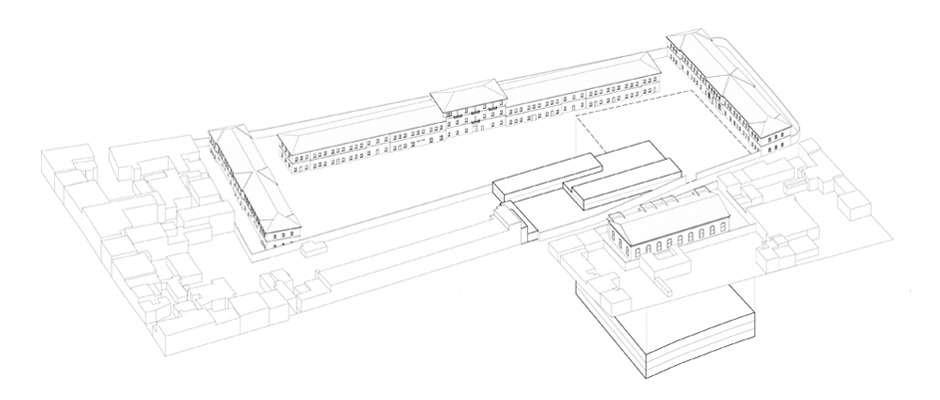
The military base “Pozzuolo del Friuli” is placed into the former San Vito Convent area. The monastery was originally set up here, later converted in military function and demolished in the Thirties of the XX Century. The existing settlement still mantains a cloistered charm thanks to its introversion toward the Piazza D’Armi (Square of Weapons). The volume’s articulation maximises sunlight exposition. Indeed, the three main buildings, placed on West, North and East side, hosted horse stables at the ground floor level, which needed as much radiation as possible for health reasons. The complex is located in strategic position: an urban district called Niccolò’s Addition characterized by many institutional headquarters related to the University and the Ancient Art Museum Department. In a Real Estate Market distinguished by a drastic contraction in demand, especially referring to conventional use destination, a successful regeneration hypothesis has to built consensus upon a scenario that is capable to interpret the context in a fresh and innovative way and to disclose still unexpressed potential. For such reasons, two scenarios have been outlined. The first one is called “International City of Accommodation” and would intercept the potential growth of tourism sector, which is looking for the “lost atmosphere” the historical city can offer. The proposal identifies functions such as a student housing, a guest room and a charm hotel with restaurants and cafe open to the adjoin Schifanoia Museum. All the functions surround the square, which will be a new public space open to the citizens. The second scenario is called “Inhabiting Ferrara” and traduces the Piazza D’Armi in an elegant collective square. The houses are placed surrounding the open space likewise a Neighbourhood domain. They are designed as far as possible from the street and open to the sunlight. In this way, the dwellings are exclusive without loosing the primitive unity of the whole complex. In both cases, the so called “Cavallerizza” building could successfully perform as a commercial or institutional congress hall.